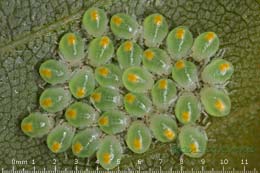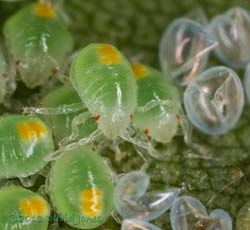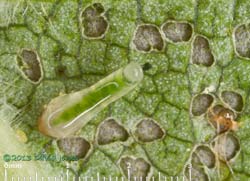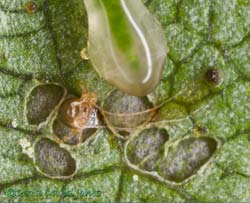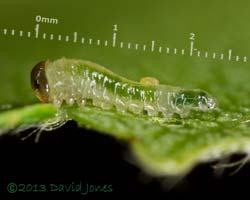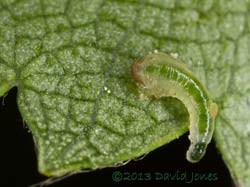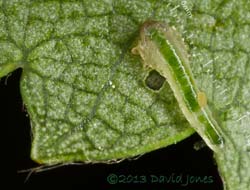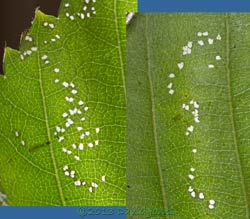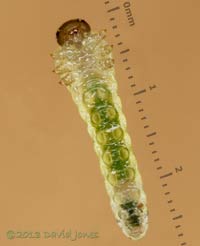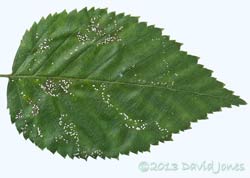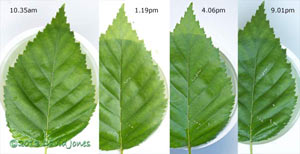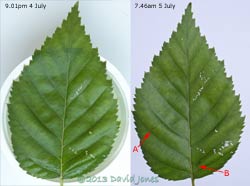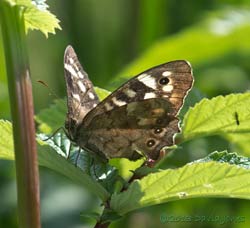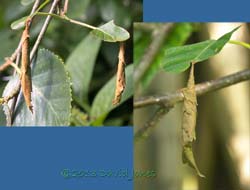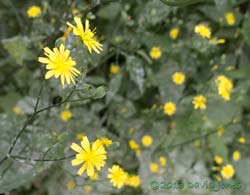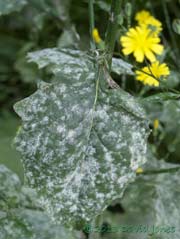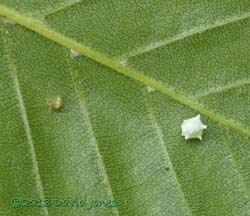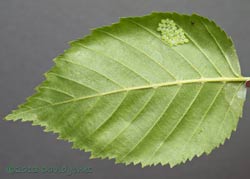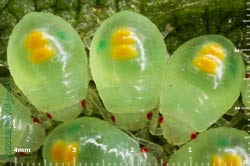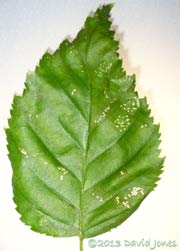Go to the last entry on this page .....Go to previous entry
2 July - After the record breaking day to end June, yesterday was very pleasant, if several degrees cooler thanks to more cloud cover. Today has been much cooler, with a high of just 16C under mainly overcast skies, with a touch of dampness in the early evening.
Continuing on the same theme from the last couple of days, the Birch has provided another example of an egg cluster from what I suspect is the same, unidentified bug species, only this time instead of twenty nine or thirty eggs we have thirty newly hatched nymphs. While this picture, taken today, does not show any egg cases,
This image shows some discarded cases as the nymphs starts to become mobile. They remained as a tight group right through yesterday and today, and were still together at 9.30pm tonight. On the other hand the egg cases have all disappeared, presumably having fallen off the leaf (or eaten by the nymphs).
On the other side of the tree a couple of leaves have areas peppered with tiny holes in their lower surfaces. It took a magnifying lens to spot the reason, some more, extremely small slug-like larvae. In this picture you can see the small areas grazed by this individual. In the bottom-right corner you can see a somewhat ghostly shape which is actually a shed skin, left by the larva during a moult.
That moult is seen more closely here, and the head end, along with the skin of a couple of the true legs visible to the left.
By this afternoon one of the larvae had moved to a new feeding area adjacent to the edge of the leaf. This presented me with a chance to capture a side (lateral) view that shows the three pairs of true legs followed by seven pairs of prolegs, typical of sawflies. The slug-like appearance of this larva suggests that it is a member of the Tenthredinidae family of sawflies, and that is the nearest I can get for the moment at least. This photograph was taken at 2pm
It wasn't long before it settled down to feed in the position shown here ( recorded at 2.09pm).
Twenty minutes later and it was moving away, leaving another 'hollowed out' section of leaf measuring approximately 0.3 x 0.3mm. It seems certain that the larva ate both the lower epidermis of the leaf along with the endodermis, but left the upper epidermis intact - I guess that it wouldn't be a good survival strategy to turn the leaf into a sieve when you are living and feeding under its canopy!
In this final set of images there is a bit of a puzzle - what is the yellow object on the back of the larva? It wasn't present yesterday. Back on 18 June I measured the thickness of a Birch leaf of roughly the same size as this one and decided that the areas between veins had an average thickness of around 0.15mm, with the top and bottom epidermal layers making up 0.05mm of that, so that the endodermis would be about 0.1mm thick. If I assume that both epidermal layers have the same thickness then one would have a thickness of about 0.025mm. Based on these measurements, the volume of plant material devoured by the larva in the 20 minute (possibly a bit less) session would have been something like (0.3 x 0.3 x 0.125)mm3 or just over 0.01mm3 ! I should point out that my use of the word endodermis isn't really appropriate when talking about a leaf, as the internal structure of a deciduous leaf consists of two layers. First is the palisade layer, immediately below the upper epidermis and which contains the bulk of the leaf's green chloroplasts. The second layer is the spongy mesophyll through which the leaf's vascular system is arranged. This layer sits directly on the lower epidermis. The fact that the eaten areas no longer look green is evidence that both the mesophyll and Palisade layers were eaten.
3 July - Another grey day, but milder than yesterday - 19C at 2pm, and while it has remained dry it looks as though it could rain at any time.
Lit from behind, the patterns of feeding shown on different areas of the same leaf show the results of a wandering larva choosing where to feed in what appears to be an almost random pattern. In the left-hand picture groups of holes (at the top and bottom of the image) with dark edges mark earlier feeding sessions. The larva is heading away from the central group of freshly 'excavated' holes.
Here, that same larva is seen from below as it crawled across some glass. You can see the true legs clearly, and the seven pairs of prolegs show up as pairs of elliptical shapes along the rear two thirds of the body. The larva was returned to the leaf afterwards. The yellow object that appeared in yesterday's photographs has disappeared. There is no sign of it on either of the two larvae on the leaf (which is being kept with its leaf stalk dipped into a small petri dish filled with rain water.
4 July - A pleasant day. Although not sunny until the late afternoon the temperature reached 22C. A day of bits and pieces, ranging from getting my hair cut to long overdue cleaning of a few bits of kit that I use for close-up and macro photography.
While there were just the two larvae on it when I first removed that leaf from the tree I can't be sure that all the holes were produced by just them, so it will be interesting to see how much effect they have on the fresh leaf.
While the top one maintained a relatively linear path, the lower larva seemed to move about more between feeding periods.
5 July - A bright morning, although at 8.45am the sky is mainly grey with just a few flecks of blue.
The lower larva (B) fed in one concentrated area before moving to the position indicated in the picture, larva (A) has been much more erratic, feeding first in the same area as yesterday before crossing over to the left side of the leaf and up towards the apex to nibble in a couple of spots before heading to the position indicated by the arrow. A light spot there suggests that it may have been feeding when the photograph was taken.
By 9.30am the cloud had largely evaporated away, giving way to blue skies and bright sunshine which was clearly welcomed by this Speckled Wood!
The moth pupa continues to hang from the birch bark with no sign of a moth emerging yet. The same goes for the much larger cases hanging from the Birch tree and first recorded on 18 June. yesterday I spotted a third example on the opposite side of the tree. I've since discovered that they are the egg nurseries of a Birch Leaf Roller (Deporaus betulae), a small weevil.
Near the house, where the veranda is in shade during the early morning things are brightened up by the display put on by the Nippleworts, their small flowers, around 15mm across, perched in delicate stems.
They are very pretty flowers and it's a pity that they are blighted by what appears to be mildew covering so many of their leaves. One curiosity about these plants is that the flowers only open in the mornings, and no matter whether it is sunny or cloudy they have all closed by lunchtime.
Returning to the Birch tree, this week has seen the appearance of the first two of these spiky spider egg cases (each with spider in attendance). I must watch out for the hatching of the spiderlets.
On the 1st and 2nd I photographed a group of newly hatched bug nymphs clustered together on a Birch leaf. This afternoon they are still together and in the same spot.
Looking closely at them shows little change over the last few days, apart from appearing to have grown slightly since the first photographs were taken despite no sign of them feeding on the leaf.
To finish off, the leaf tonight at 9.20pm, showing that there was quite a bit of feeding activity by the larvae during the day. And talking of the day, the temperature exceed 25C for a couple of hours during the late afternoon.
Click on images to see larger versions
|
|
